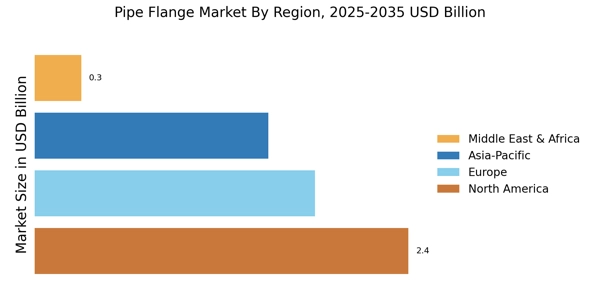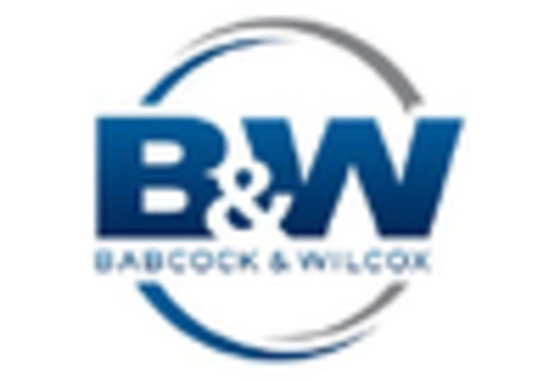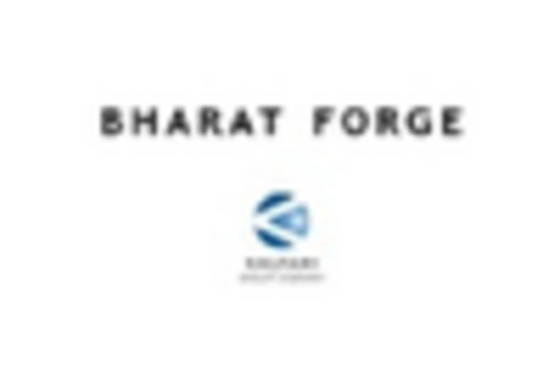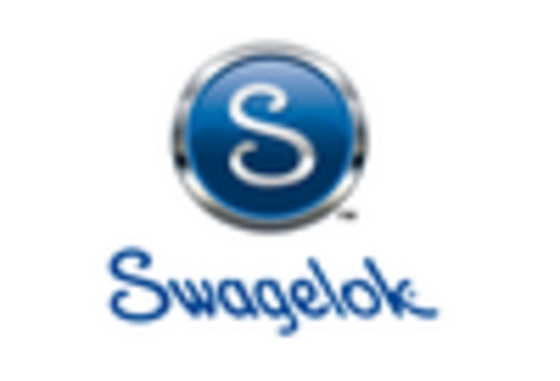Growing Focus on Safety Standards
The growing focus on safety standards is a critical driver for the Pipe Flange Market. Regulatory bodies across various sectors are implementing stringent safety regulations to ensure the integrity of piping systems. In 2025, compliance with these standards is expected to become increasingly important, particularly in industries such as oil and gas, chemicals, and water treatment. This heightened emphasis on safety is likely to drive demand for high-quality flanges that meet or exceed regulatory requirements. Manufacturers may need to invest in quality assurance processes and certifications to remain competitive in the market. Additionally, the rising awareness of the consequences of pipeline failures may further propel the demand for reliable flanges, as companies prioritize safety and risk management in their operations.
Rising Demand in Oil and Gas Sector
The Pipe Flange Market is experiencing a notable surge in demand, particularly driven by the oil and gas sector. As exploration and production activities expand, the need for reliable and durable piping systems becomes paramount. In 2025, the oil and gas industry is projected to account for a substantial share of the pipe flange market, with estimates suggesting a growth rate of approximately 5% annually. This growth is largely attributed to the increasing investments in offshore and onshore drilling projects, which necessitate high-quality flanges to ensure safety and efficiency in operations. Furthermore, the shift towards more sustainable energy sources may also influence the types of flanges required, as companies seek to enhance their operational integrity while minimizing environmental impact.
Expansion of Renewable Energy Projects
The expansion of renewable energy projects is emerging as a significant driver for the Pipe Flange Market. As countries strive to transition towards sustainable energy sources, investments in wind, solar, and hydroelectric power are increasing. In 2025, the renewable energy sector is anticipated to require a diverse range of piping solutions, including flanges that can withstand varying environmental conditions. This shift towards renewable energy may lead to the development of specialized flanges designed for specific applications, such as offshore wind farms or solar thermal plants. Furthermore, the integration of advanced materials and technologies in these projects could enhance the performance and longevity of flanges, thereby creating new opportunities for manufacturers in the market.
Infrastructure Development Initiatives
Infrastructure development initiatives are significantly influencing the Pipe Flange Market. Governments and private entities are investing heavily in the construction and upgrading of transportation, water supply, and energy infrastructure. In 2025, the global infrastructure spending is expected to reach trillions of dollars, with a considerable portion allocated to projects requiring robust piping systems. This trend is likely to drive the demand for various types of flanges, including weld neck, slip-on, and blind flanges, which are essential for ensuring the integrity of piping systems. Additionally, the increasing focus on urbanization and smart city projects may further bolster the market, as these initiatives often require advanced piping solutions to support modern infrastructure needs.
Technological Innovations in Manufacturing
Technological innovations in manufacturing processes are reshaping the Pipe Flange Market. Advances in materials science and production techniques are leading to the development of flanges that offer enhanced performance and durability. For instance, the introduction of corrosion-resistant materials and precision machining technologies is expected to improve the reliability of flanges in various applications. In 2025, the market is likely to witness a shift towards flanges that not only meet stringent quality standards but also offer cost-effective solutions for manufacturers. This trend may result in increased competition among suppliers, as companies strive to differentiate their products through innovation. Moreover, the integration of automation and digital technologies in manufacturing processes could streamline production, thereby reducing lead times and enhancing overall efficiency.


















Leave a Comment